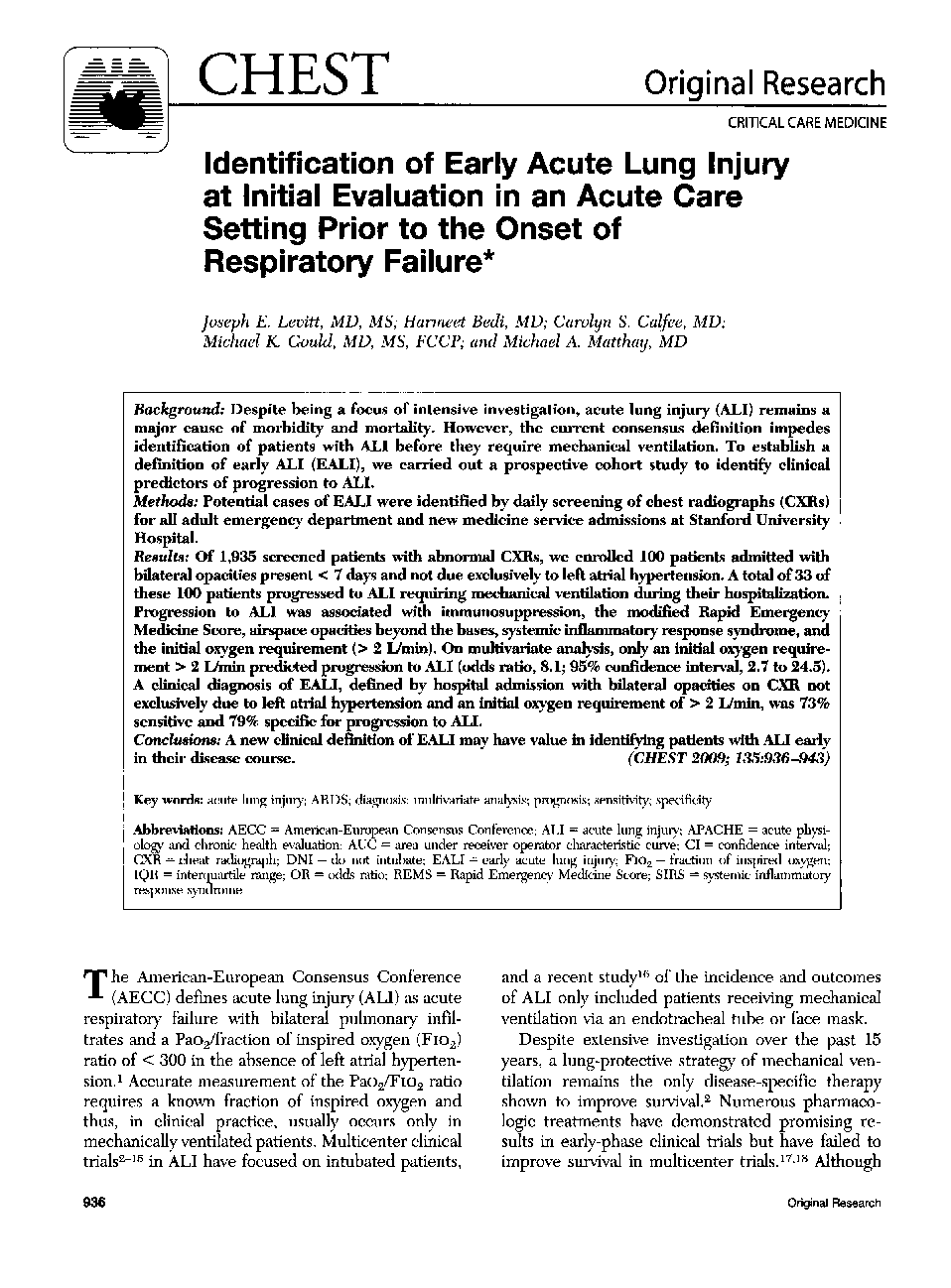| Article ID | Journal | Published Year | Pages | File Type |
|---|---|---|---|---|
| 2903617 | Chest | 2009 | 8 Pages |
BackgroundDespite being a focus of intensive investigation, acute lung injury (ALI) remains a major cause of morbidity and mortality. However, the current consensus definition impedes identification of patients with ALI before they require mechanical ventilation. To establish a definition of early ALI (EALI), we carried out a prospective cohort study to identify clinical predictors of progression to ALI.MethodsPotential cases of EALI were identified by daily screening of chest radiographs (CXRs) for all adult emergency department and new medicine service admissions at Stanford University Hospital.ResultsOf 1,935 screened patients with abnormal CXRs, we enrolled 100 patients admitted with bilateral opacities present < 7 days and not due exclusively to left atrial hypertension. A total of 33 of these 100 patients progressed to ALI requiring mechanical ventilation during their hospitalization. Progression to ALI was associated with immunosuppression, the modified Rapid Emergency Medicine Score, airspace opacities beyond the bases, systemic inflammatory response syndrome, and the initial oxygen requirement (> 2 L/min). On multivariate analysis, only an initial oxygen requirement > 2 L/min predicted progression to ALI (odds ratio, 8.1; 95% confidence interval, 2.7 to 24.5). A clinical diagnosis of EALI, defined by hospital admission with bilateral opacities on CXR not exclusively due to left atrial hypertension and an initial oxygen requirement of > 2 L/min, was 73% sensitive and 79% specific for progression to ALI.ConclusionsA new clinical definition of EALI may have value in identifying patients with ALI early in their disease course.
